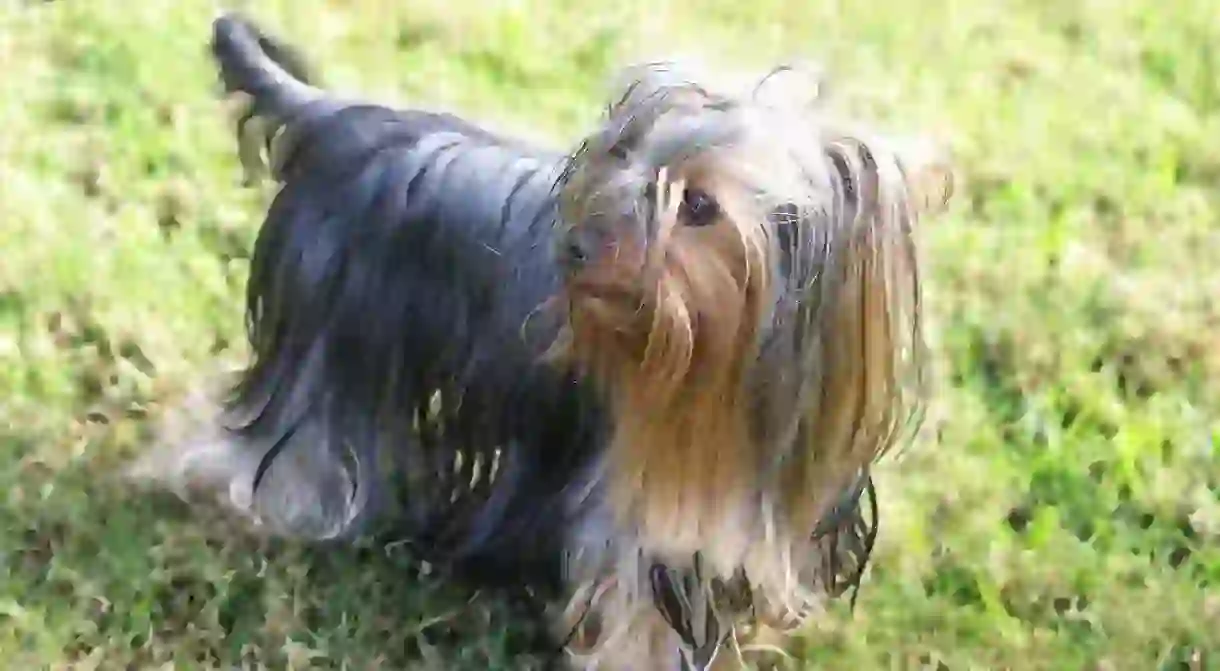A Brief History of the Yorkshire Terrier

Yorkshire’s most famous breed of dog is one of the smallest and cutest in the world. Who isn’t charmed when they meet a tiny Yorkshire Terrier? The perfect pet for families, an excellent choice for those who are allergic to dog hair, and one of the cleverest breeds there is – the Yorkshire terrier is an excellent choice for dog lovers. But where did they originate from?
Due to their small size, Yorkshire Terriers were initially bred to catch rats in Yorkshire mills and mines during the Industrial Revolution. During the 19th century, workers from Scotland travelled to Yorkshire to find work in the mills that were abundant in the area, bringing a variety of breeds of small terriers with them as companions. There are no exact records detailing the breeds that contributed to creating Yorkies, but based on the Yorkshire Terriers appearance it is commonly thought that Clydesdale, Paisley and Skye Terriers are all part of its ancestry.

Although Yorkies were excellent ratters in the mills and mines of the north of England, their small size and bravery enabled them to be used to hunt various other species. The dogs were small enough to be carried in the pockets of hunters and then unleashed to enter the dens of wild animals such as foxes and badgers. Despite their small size, Yorkshire Terriers seemed to love the thrill of the hunt and didn’t back down when confronted with prey larger than themselves, proving to be an incredibly courageous breed.
During the Victorian era, Yorkies became a desirable pet with royalty and the upper classes in part due to their reputation but mainly thanks to their small size, as small dogs were very on trend at the time. Their long luscious coats differentiated them from other toy dogs, and owning a Yorkshire Terrier became a symbol of wealth.

The Yorkshire Terrier breed type was defined in the late 1860s by an incredibly popular show dog named Huddersfield Ben. Owned by a Yorkshire woman named Mary Ann Foster, Huddersfield Ben won over 70 dog show events and ratter competitions, quickly becoming an archetype for the breed. Known as the ‘father of the breed’, the dog’s popularity defined the characteristics of Yorkshire Terriers. An iconic portrait by George Earl depicts Huddersfield Ben in all his glory, displaying the long silky hair which is still seen on show dogs today.
By the 1870s, the breed had been given its official name of the Yorkshire Terrier and had made its way across the Atlantic, proving as popular in America as in England thanks to its small size and friendly nature.

The breed’s popularity soared until the 1940s, when interest in Yorkie’s began to drop. It was thanks to a celebrity dog named Smoky that the breed found itself back in fashion, more popular than ever. Smoky was discovered in a shell hole in New Guinea by American troops during World War II. Although she didn’t understand either English or Japanese commands, she became part of the troop and accompanied them on over 150 air raids and 12 sea missions. Smoky proved to be an incredibly intelligent dog, entertaining the troops with tricks and learning skills that allowed her to aid them, for example carrying a telegraph wire through a long thin pipe. She even jumped from a 30-foot tower with a tiny parachute that was made especially for her. Following the war, she accompanied the man who had found her in visiting American veterans.
Yorkshire Terriers are currently one of the most popular toy dog breeds across the world, particularly in the UK, America, Australia, Italy and parts of South Africa. Although they are very vocal dogs (making them excellent guard dogs), they are still known for their silky coats, courage and companionship.













